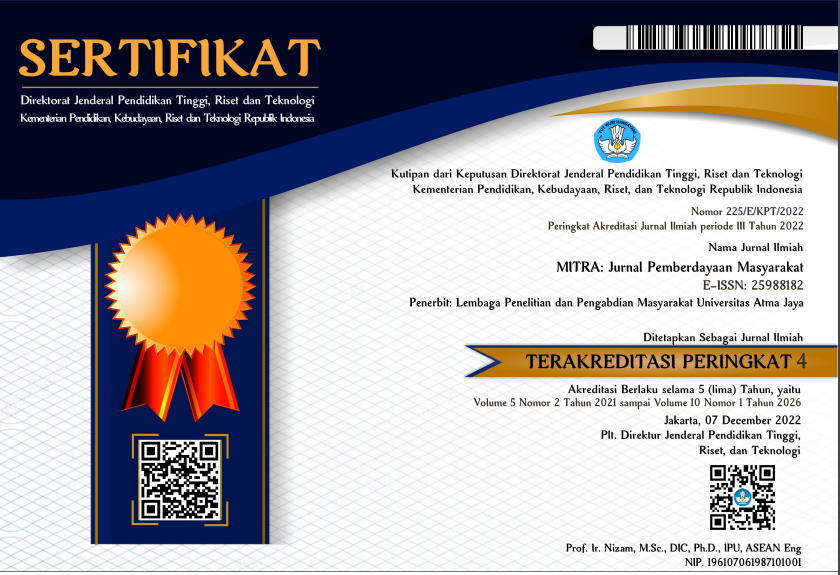Enterpreneurship Training of Oyster Mushroom-Based Nugget in Lembaga Pemasyarakatan Terbuka Kelas IIB Jakarta
DOI:
https://doi.org/10.25170/mitra.v2i1.30Keywords:
oyster mushroom, entrepreneurship, prison, nugget, prisonersAbstract
Lembaga Pemasyarakatan (Lapas) Terbuka Kelas IIB Jakarta manages oyster mushroom as the potential food resource. The mushroom is cultivated by prisoners in the prison. However, it has not been utilized optimally as an effective business opportunity. The purpose of this community service was threefold, namely i) to utilize the potential of oyster mushroom in Lapas Terbuka Kelas IIB Jakarta to be processed into nugget as the food product with higher selling value; ii) to encourage prisoners’ entrepreneurship spirit; and iii) to produce oyster mushroom-based nugget continuously to increase prison productivity. The method used in this program was training the prisoners oyster mushroom-based nugget processing and packaging using vacuum packaging technology, entrepreneurship and marketing strategy, as well as financial accounting. Afterwards, nugget processing, packaging, and simple financial accounting practice were conducted. The evaluation was conducted after two months of training to evaluate the implementation of nugget entrepreneurial activities in prison. The program was attended by prisoners and prison staff members. Through this community service program, we hope oyster mushroom cultivation in prison could be utilized more effectively so that productivity can be raised. Continuous coaching is needed to keep the production, marketing, and financial record activities work better.
References
Brenesselova, M., Korenekova, B., Macanga, J., Marcincak, S., Jevinova, P., Pipova, M., & Turek, P. (2015). Effects of vacuum packaging conditions on the quality, biochemical changes and the durability of ostrich meat. Meat science, 101, 42-47.
BSN. (2002). Standar Nasional Indonesia Nugget Ayam (Chicken nugget). Jakarta: Badan Standardisasi Nasional.
Deepalakshmi, K. & Mirunalini, S. (2014). Pleurotus ostreatus: An oyster mushroom with nutritional and medicinal properties. Journal of Biochemical Technology, 5 2, 718-726.
Nur, M. (2009). Pengaruh cara pengemasan, jenis bahan pengemas, dan lama penyimpanan terhadap sifat kimia, mikrobiologi, dan organoleptik sate bandeng (Chanos Chanos). Jurnal Teknologi dan Industri Pertanian, 10, 1, 1-11.
Sigh, R. P. & Heldman, D. R. (2014). Introduction to Food Engineering (5th ed.) USA: Academic Press.
Trilaksani, W., Rahmania, I., Pelu, K., Chaidir, A., Supraptika, K., Hertuti, D., Fadillah, R., & Hartono, B. (2008). Modul TOT Berbasis Ikan dan Limbahnya. Jakarta: Direktorat Pengolahan Hasil, Direktorat Jenderal Pengolahan dan pemasaran Hasil Perikanan, Kementerian Kelautan dan Perikanan.
Downloads
Published
Issue
Section
License
This license allows reusers to distribute, remix, adapt, and build upon the material in any medium or format for noncommercial purposes only, and only so long as attribution is given to the creator. If you remix, adapt, or build upon the material, you must license the modified material under identical terms.



_.jpeg)

.png)
2.png)
.png)
.png)



